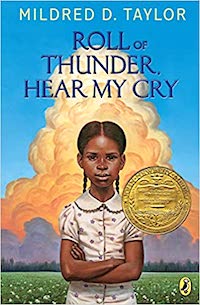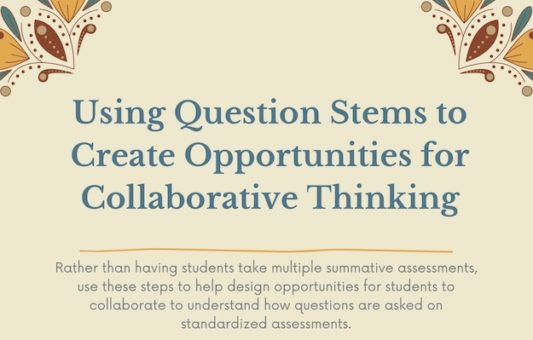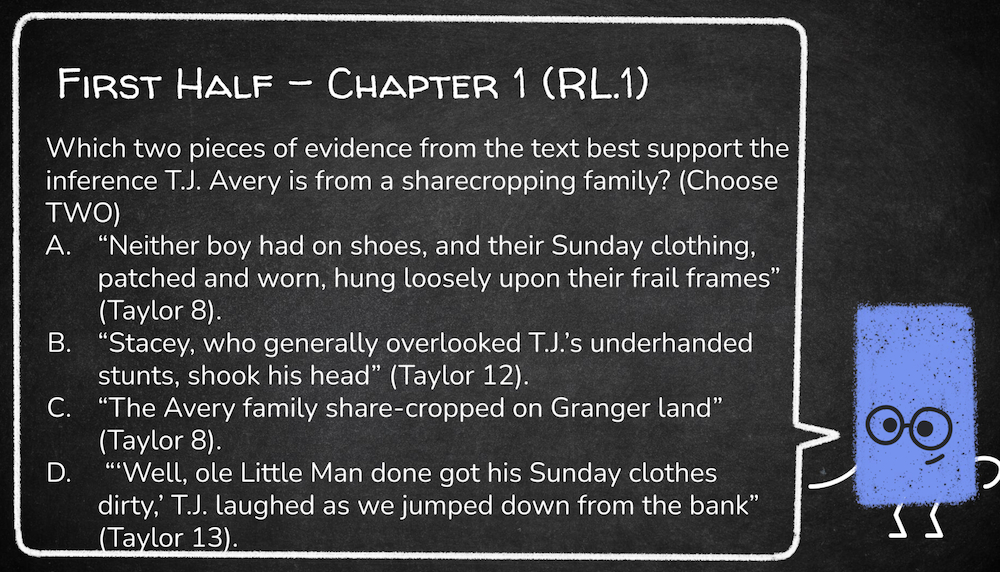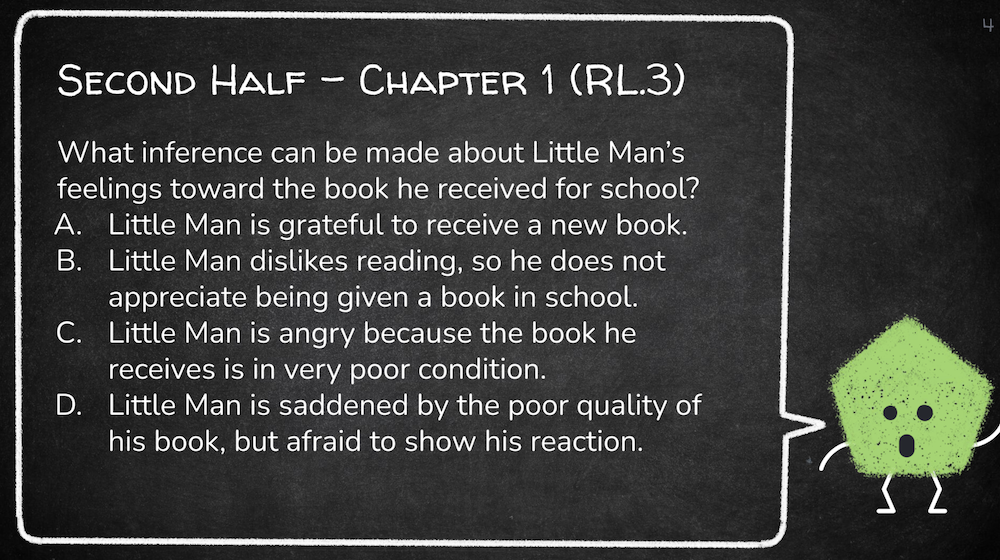Combine Test Prep and Collaborative Thinking
By Katie Durkin
 One of my favorite times of the school year is our whole-class novel unit with Newbery Medal winner Roll of Thunder, Hear My Cry by Mildred D. Taylor.
One of my favorite times of the school year is our whole-class novel unit with Newbery Medal winner Roll of Thunder, Hear My Cry by Mildred D. Taylor.
This story is one of my favorites because of Taylor’s vivid descriptions of Jim Crow Mississippi during the Great Depression and her creation of strong, complex characters who both struggle and thrive during this time.

My focus in past years has typically been on the plot development, character change, and theme. This year I will be adding a new approach to this unit to help students prepare for future standardized assessments while teaching them the power of collaborative thinking.
Adding Questions of the Day
to a Whole-Class Novel Unit
Included in our work with the novel this year will be a multiple choice “Question of the Day,” developed using question stems from our state and district standardized assessments. This new addition to the unit was in response to our district’s requirements for more test preparation following the learning loss our students are said to have experienced as a result of the pandemic.
Not wanting to subject our students to more rote learning exercises, or more assessments, my fellow 7th grade teachers and I decided to use this as an opportunity to prepare our students for the mandated tests while also promoting discussion through collaborative thinking.
We decided to do this work with our whole-class novel unit because all students would be able to contribute to discussions since we are reading the same text. For many students, this is also their first experience reading a whole-class novel.
Our students are used to participating in discussion and collaborative thinking because of our math curriculum emphasizes group-problem solving skills.
To do this work, students would discuss the “Question of the Day” in small groups to start. Then we would have a discussion as a whole class to dissect what the question is asking and why the answer provided is the best answer.
So far, my students are enjoying the opportunity to discuss the story while also practicing skills they know they will need later in the year. They also enjoy explaining their reasoning when they have the correct answer.
Want to try it? Here’s how
How might you promote collaborative thinking using standardized question stems with your own students? Here are the steps we took to roll out this learning strategy. (This could work for any tested subject!)
First, choose a unit where students will have multiple opportunities to discuss the same topic or text(s). My team and I chose our whole-class novel unit because we could start this work inside that unit and then continue it when students begin working in book clubs later in the year.
Step 2: Gather resources to determine how questions are asked on your grade’s standardized assessments. We were able to use practice tests from district assessments to determine various question stems for each standard. Many states publish practice tests on their Department of Education website. We also used the websites Newsela and CommonLit since they focus on using the Common Core Standards to create their assignments.
In collaborating with my colleagues, we were able to notice patterns in how questions were asked for different standards. For example, many of the standards asked students to choose the BEST piece of evidence or the BEST possible response.
We also noticed that students had to choose multiple answers for some of the questions. These patterns allowed us to have great conversations with students about how questions were asked and how choosing the BEST answer (or answers) required critical thinking.
Once we determined the question stems to use for the standards we wanted to focus on during the unit, we devoted our common planning time to creating questions and compiling the multiple choice answers.
Because we were reading a whole-class novel, we created 12 questions, one for each chapter of the book. We felt this was a good number. Students would not be overwhelmed doing just one question per day and per chapter, and this also didn’t present a significant demand on our time either.
From there, it was time to share the questions with the students. After we had discussed the content of the chapter students read for the day’s class to ensure comprehension, we introduced the “Question of the Day.”
Students had time to collaboratively think about what the question was asking and how they would like to respond as a small group. This conversation was the most important part of this work because students were co-constructing meaning about the text while developing critical thinking skills.
After students had a chance to discuss the question, they shared their thoughts with the whole class. Even if students didn’t choose the right answer, we were able to have a whole-class discussion about why an answer was correct. Oftentimes, students take standardized assessments and don’t have any follow-up on why an answer was not correct.

Co-constructing meaning about shared text
This whole-class discussion allowed an opportunity for students to collaborate and use each other’s ideas to answer the question, while also allowing students to ask questions to clarify their own thinking. Similar to the small group discussion, this whole-class discussion allowed students, and myself, to co-construct meaning about the shared text.
This work will not end with our whole-class novel unit. Our next unit of study will be historical fiction book clubs, where students will have an opportunity to study a time period in history in small groups.
These clubs will have students reading both fiction and nonfiction texts to help them understand their chosen time period. One of the tasks in these clubs will be to provide students with the question stems and have them create their own questions to bring to the group discussion.
The hope is this work will help students continue to discern how questions are asked on standardized assessments while also practicing collaborative thinking. I am looking forward to passing the baton to my students for them to continue working on collaborative thinking in their book clubs.
Katie Durkin (@kmerz610) has been teaching English Language Arts to middle school students for a decade and currently teaches 7th grade Reading Workshop at public Middlebrook School in Wilton, Connecticut.
Katie is a zealous reader of middle grades and young adult books and enjoys sharing her love and passion for reading with her students. She is a doctoral student at Northeastern University studying the impact of classroom libraries on middle school students’ reading engagement. She is also the 2020 recipient of the Edwyna Wheadon Postgraduate Training Scholarship from the National Council of Teachers of English.
































